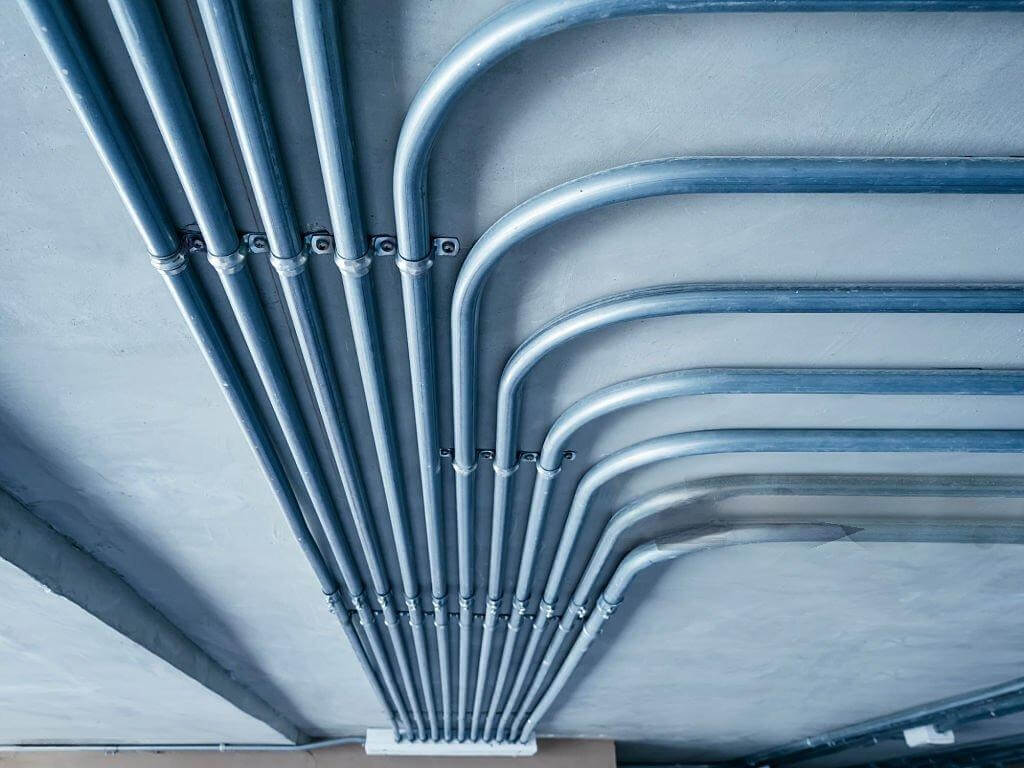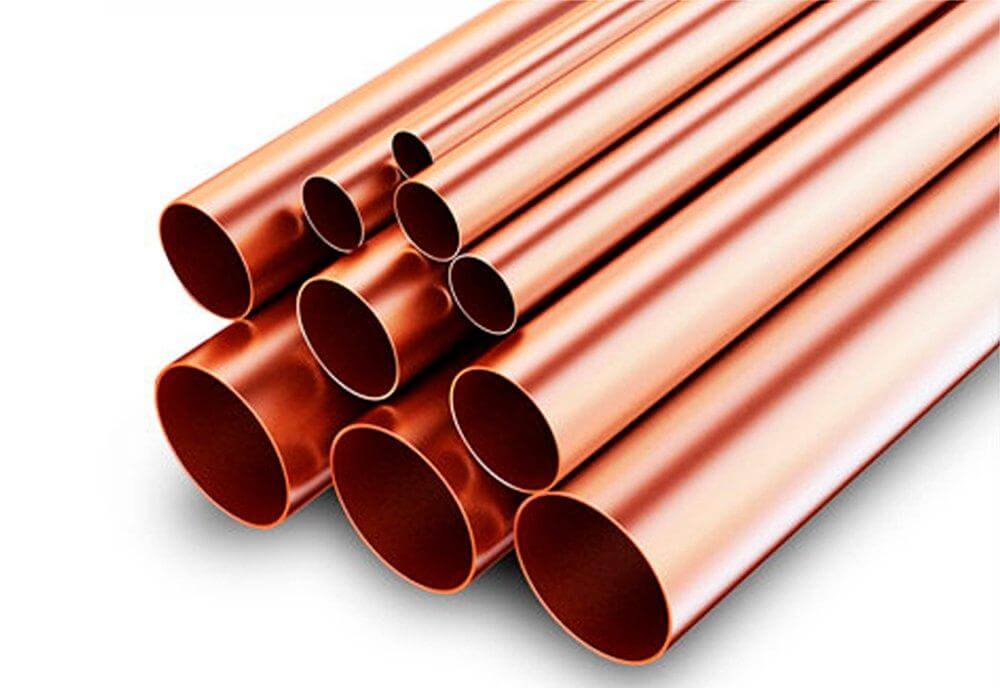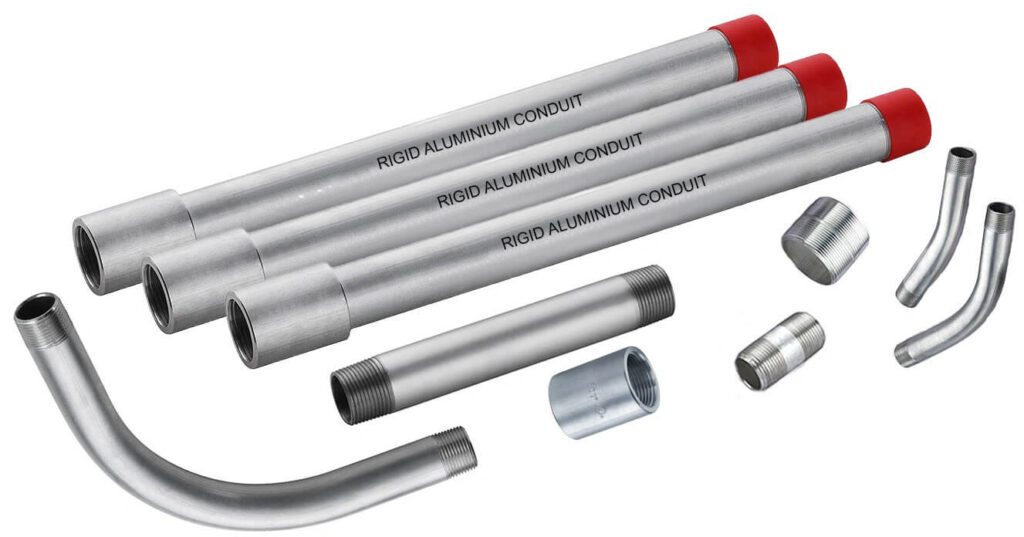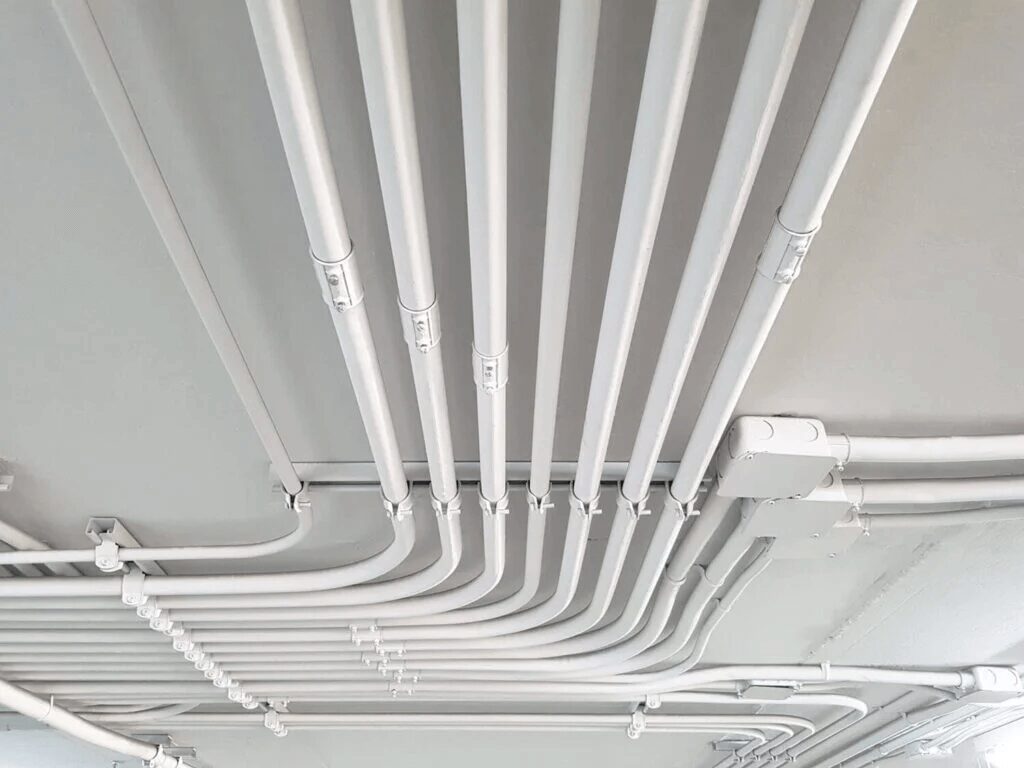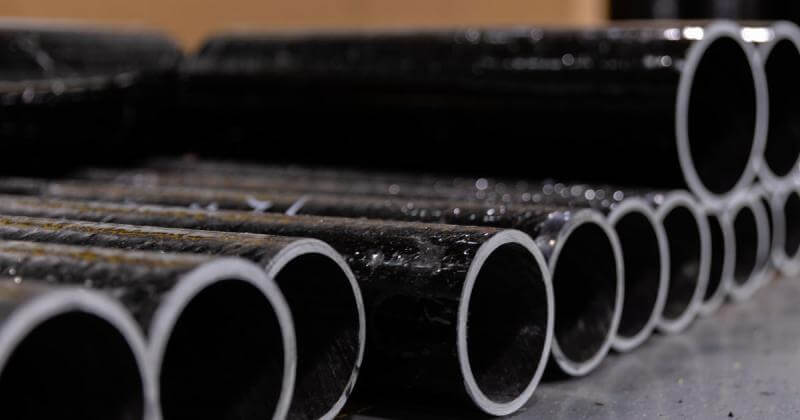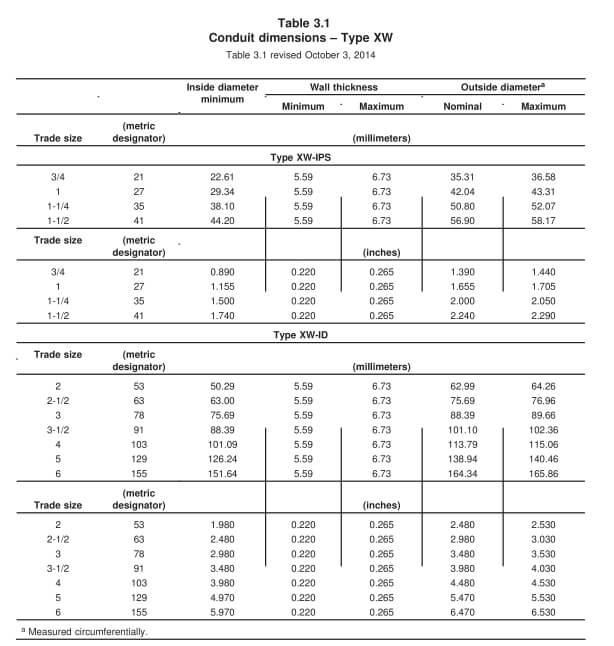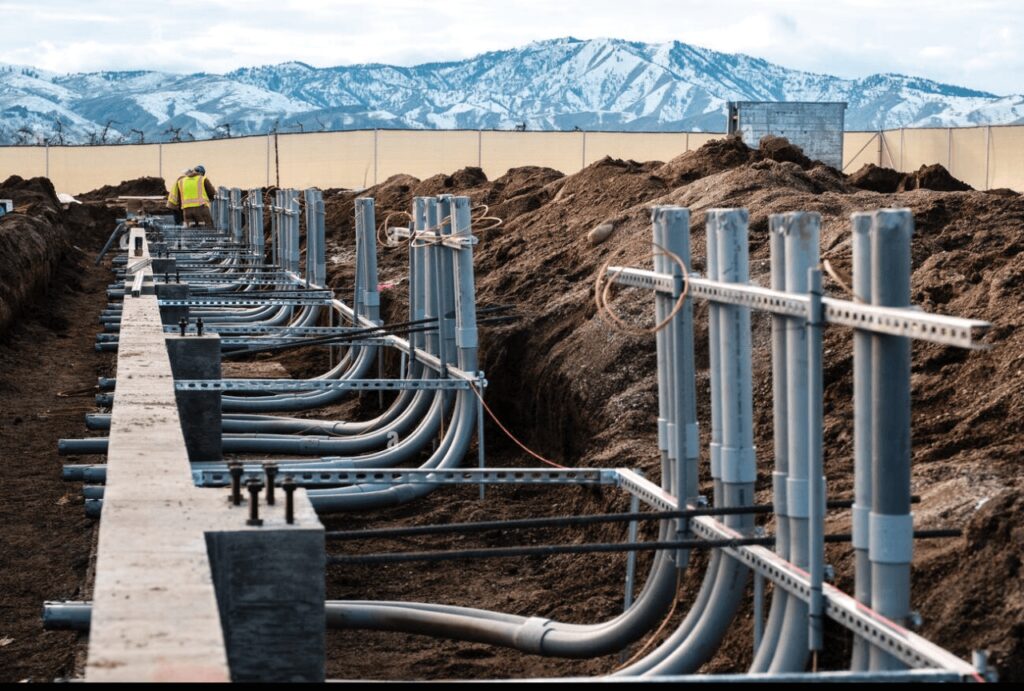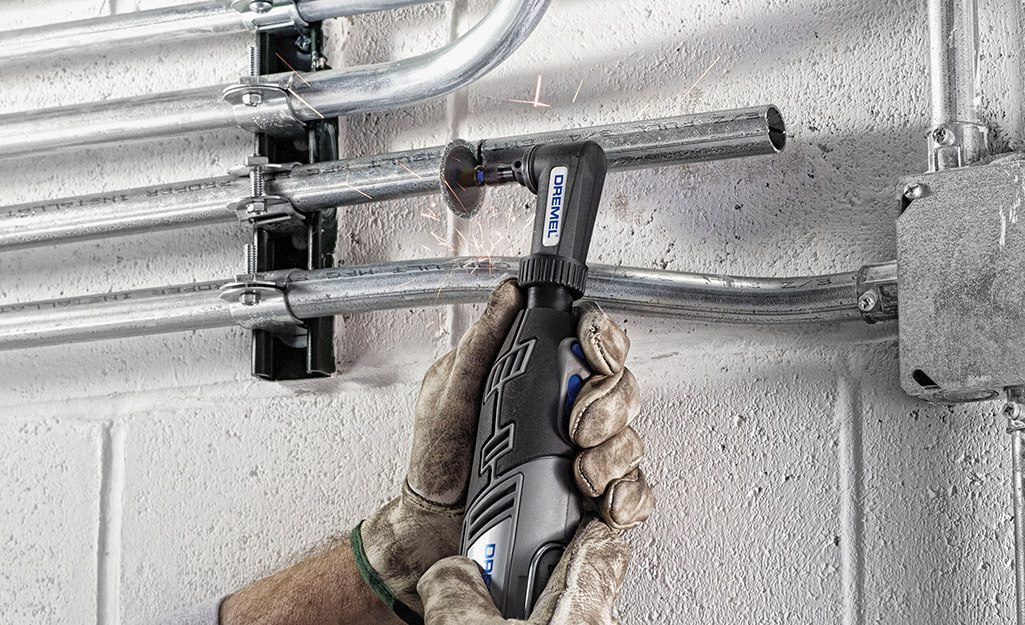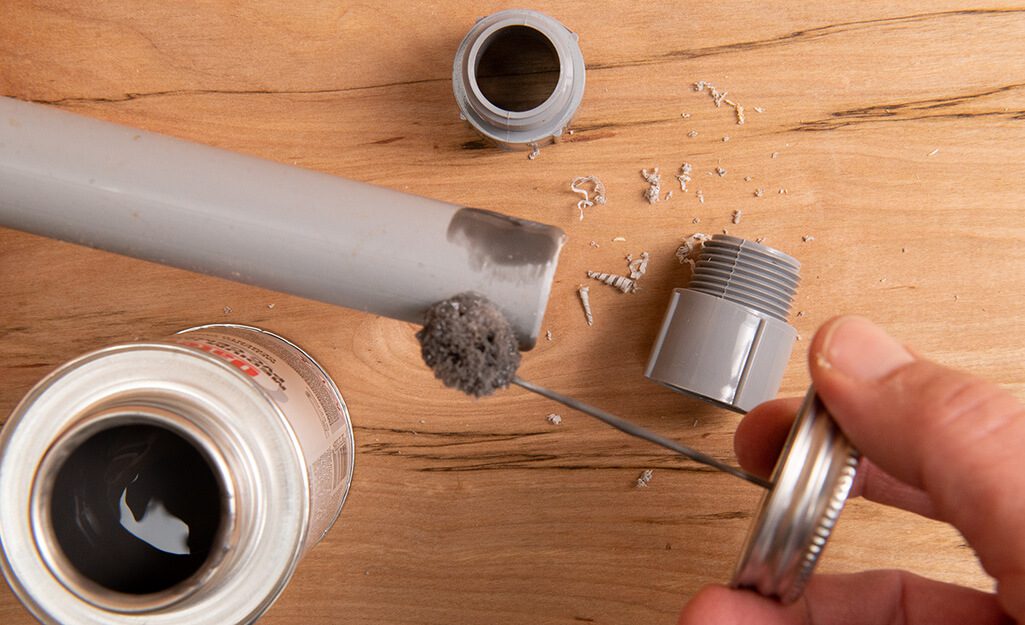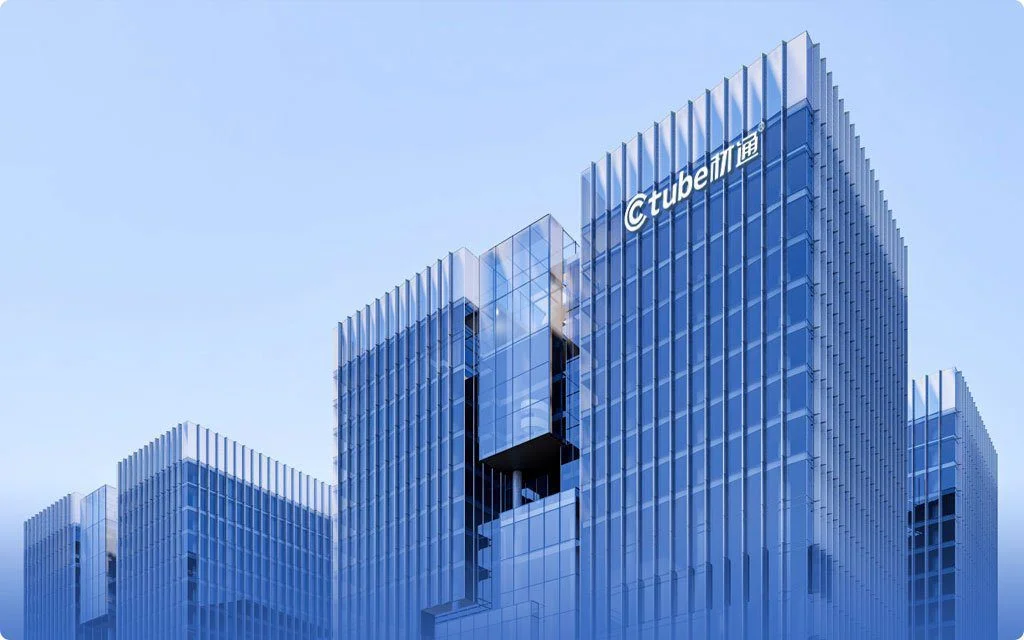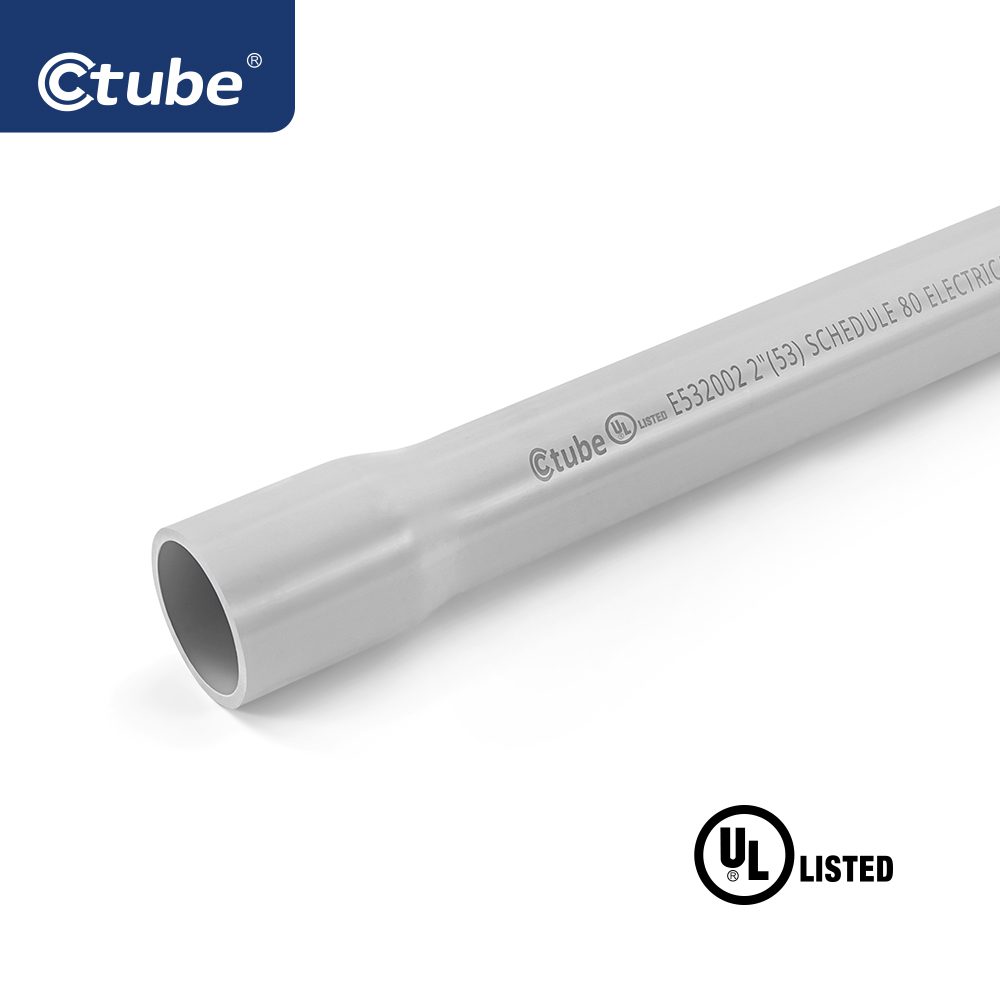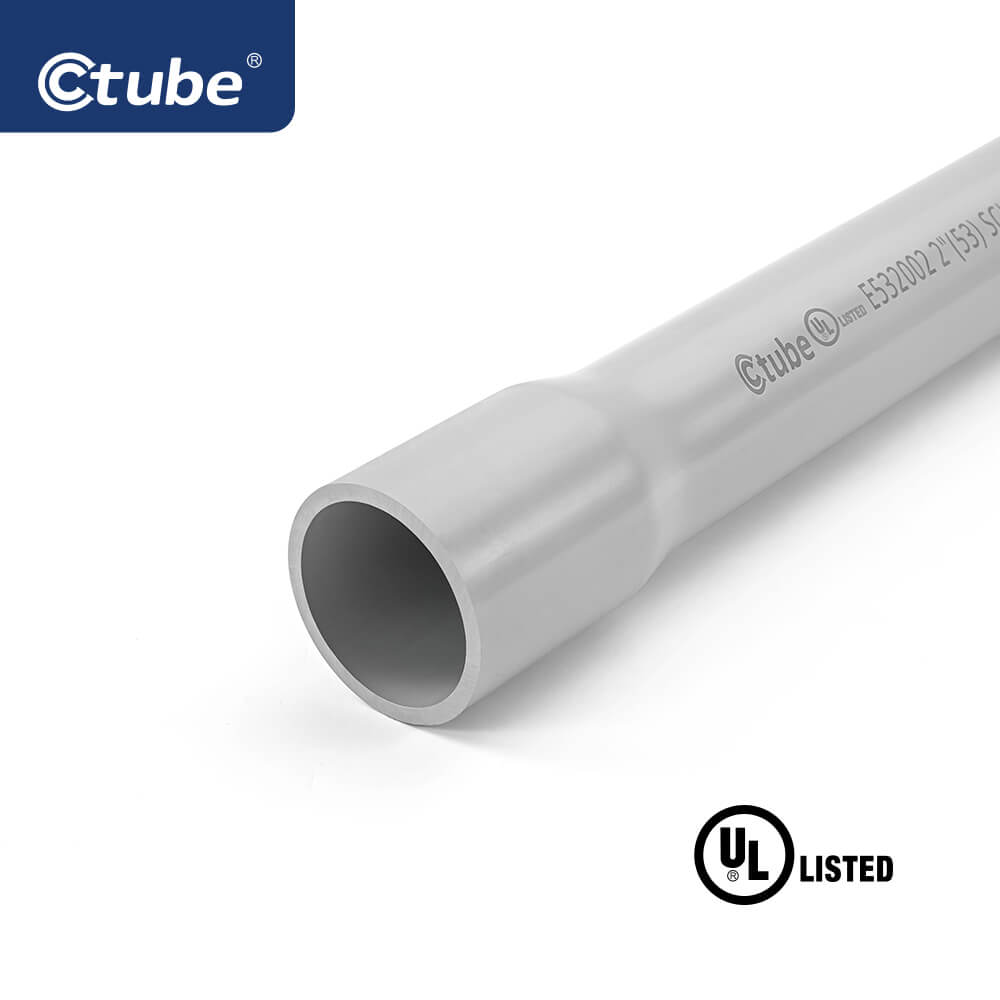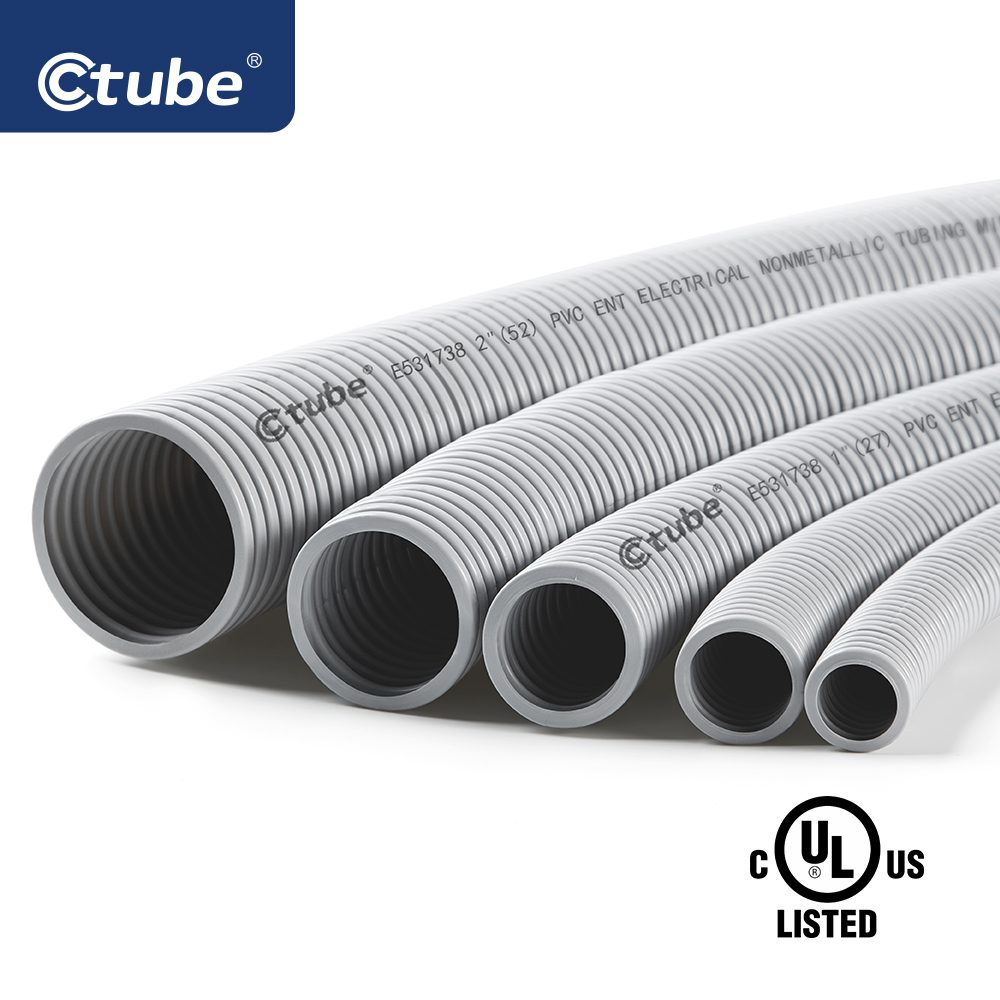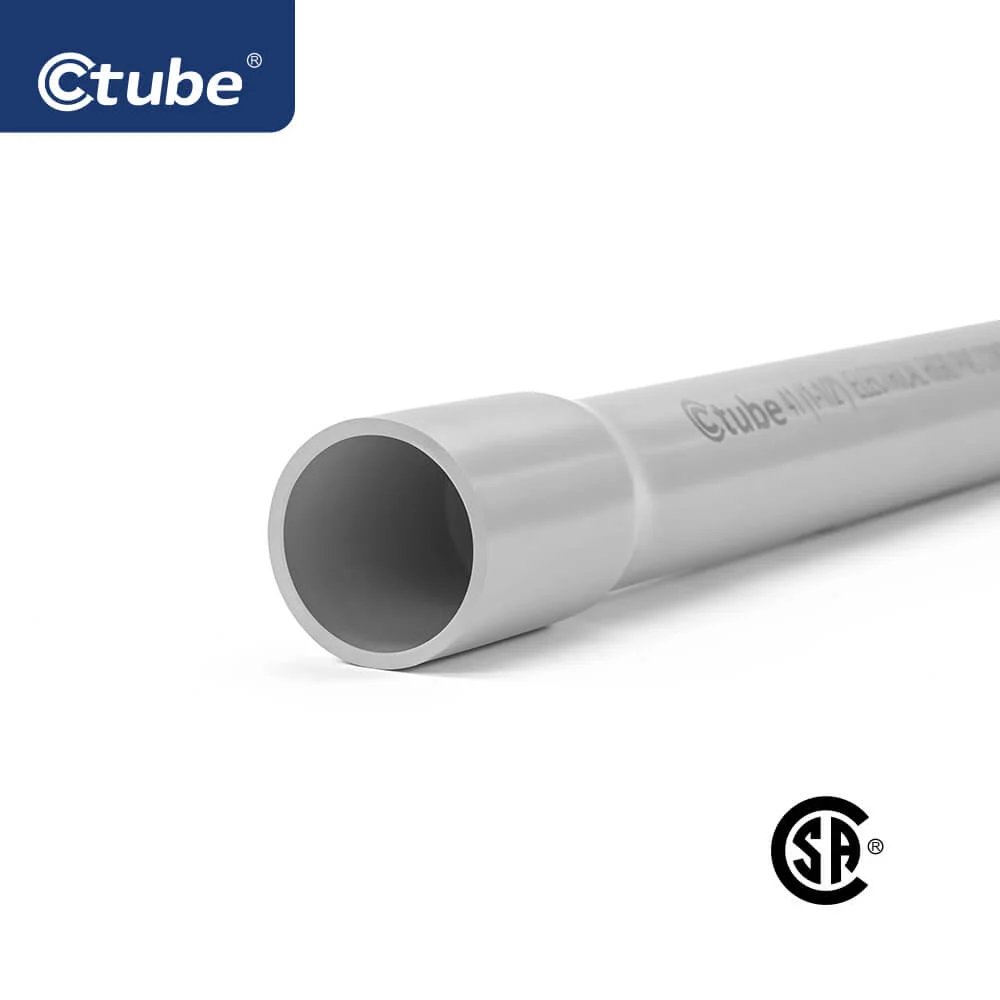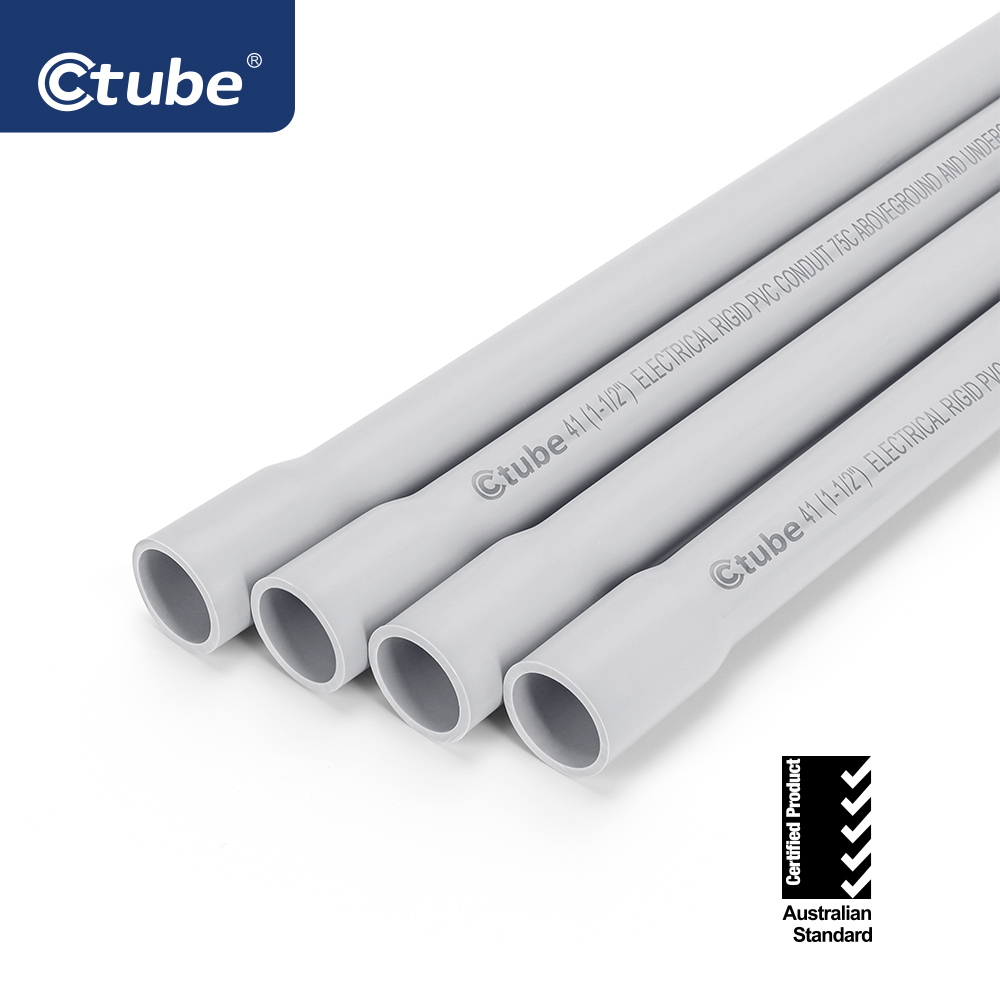جدول المحتويات
تبديل1. المقدمة: فهم الأنابيب الكهربائية الصلبة
In the realm of electrical systems, conduits play a pivotal role in ensuring safety, longevity, and functionality.
Electrical conduits serve as protective channels through which electrical wiring is run, shielding cables from physical damage, moisture, chemicals, and other environmental factors.
Among the various types of conduits available, rigid electrical conduit stands out for its robustness and suitability in both industrial and residential applications.

Rigid electrical conduit is available in a variety of forms, each designed to serve specific needs depending on the material and application.The primary materials used for rigid electrical conduits include PVC (Polyvinyl Chloride), galvanized steel, aluminum, and RTRC (Reinforced Thermosetting Resin Conduit), among others.Each material brings unique advantages, making rigid conduit versatile across a range of environments and project requirements.By the end of this post, you will have a thorough understanding of what rigid electrical conduit is, why it is an essential component in modern electrical systems, and how to incorporate it into your next project to maximize safety, efficiency, and compliance.
Metal Rigid Conduit includes types like Rigid Metal Conduit (RMC), Intermediate Metal Conduit (IMC), and Electrical Metallic Tubing (EMT), known for their strength and durability, making them suitable for industrial and outdoor use.Plastic Rigid Conduit, such as Rigid Polyvinyl Chloride (PVC), is lightweight, corrosion-resistant, and commonly used in environments where moisture protection is essential, like underground installations.
Additionally, RTRC conduit, made from fiberglass, offers excellent electrical insulation, thermal resistance, and corrosion protection, making it an ideal choice for applications requiring non-conductive and high-strength materials.
في المقالة التالية، سوف نقدم تفاصيل الأنابيب الصلبة المصنوعة من مواد مختلفة.
2. Types of Rigid Electrical Conduits – Detailed Introduction
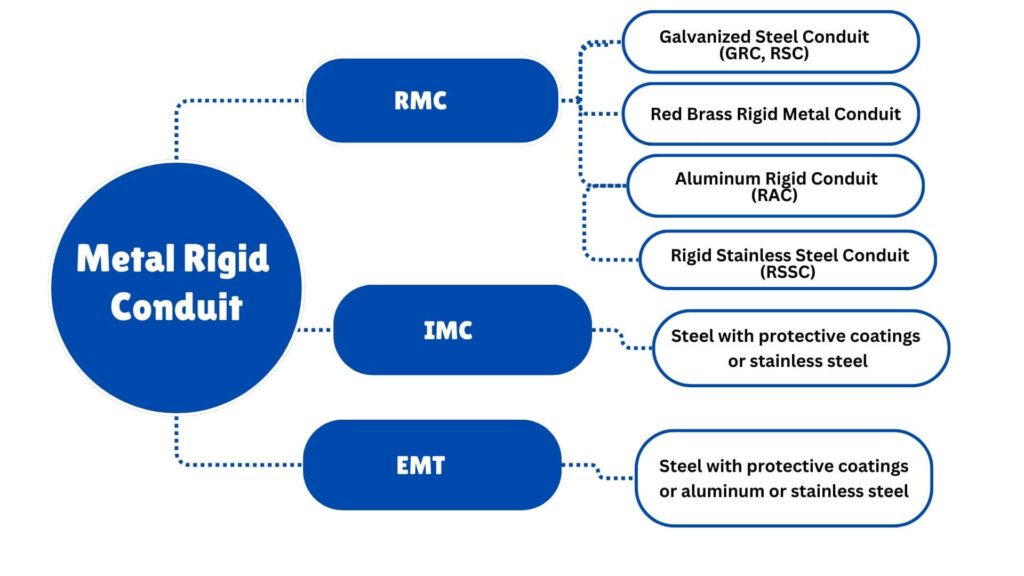
يتوفر RMC في المواد التالية:
• Steel with protective coatings
• Aluminum
• Red brass
• Stainless steel
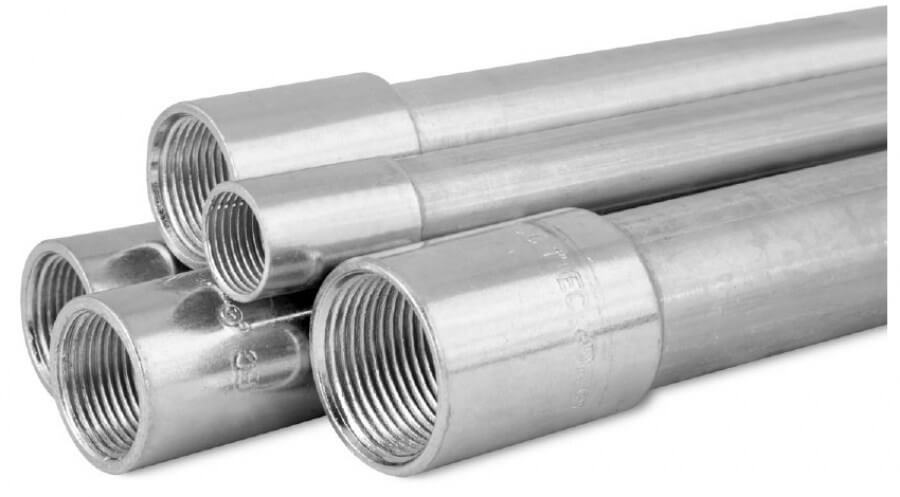
Material and Structure
Each tube used for Rigid Steel Conduit (RSC) shall be made of steel, ensuring that it is straight and features a circular cross-section.
| Metric Designator | Outside Diameter (mm) | Trade Size | Outside Diameter, a (in) |
|---|---|---|---|
| 12b | 17.15 | 3/8b | 0.675 |
| 16 | 21.34 | 1/2 | 0.840 |
| 21 | 26.67 | 3/4 | 1.050 |
| 27 | 33.40 | 1 | 1.315 |
| 35 | 42.16 | 1-1/4 | 1.660 |
| 41 | 48.26 | 1-1/2 | 1.900 |
| 53 | 60.33 | 2 | 2.375 |
| 63 | 73.03 | 2-1/2 | 2.875 |
| 78 | 88.90 | 3 | 3.500 |
| 91 | 101.60 | 3-1/2 | 4.000 |
| 103 | 114.30 | 4 | 4.500 |
| 129 | 141.30 | 5 | 5.563 |
| 155 | 168.28 | 6 | 6.625 |
a Tolerances: Trade Size 12–41 (3/8–1-1/2) ± 0.38 mm (±0.015 in). Trade Size 53–155 (2–6) ± 1%.
b In the United States, 12 (3/8) trade size is permitted for special applications. In Canada, 12 (3/8) trade size is not permitted according to the Canadian Electrical Code, Part I.
Welded Seams
The welding process for RMC tubes must meet strict criteria to ensure safety and functionality.
Welded seams should not have metal trimmings, sharp edges, or projections that could interfere with the internal wiring or the installation process.
A slight bead along the interior of the seam is permissible, as long as it is smooth and does not exceed 0.38 mm (0.015 in) in height for trade sizes 12 to 53 (3/8 inch to 2 inches) or 0.51 mm (0.020 in) for trade sizes 63 to 155 (2 ½ inches to 6 inches).
Standard Length and Weight Requirements
The standard length of straight zinc-coated conduit or bare threaded tubes to be coated with an alternate corrosion-resistant material, including one coupling, must follow the specifications detailed Table in the followinggs.
These tables outline the dimensions and weights for conduit that complies with the given standards.
| Metric Designator | Length of Straight Conduita (mm) |
Min. Acceptable Weight of 10 Lengths of Conduit with Ten Couplings, (kg) Finished Zinc Coated Conduitb |
Min. Acceptable Weight of 10 Lengths of Conduit with Ten Couplings, (kg) Bare Threaded Tubec |
Trade Size | Length of Straight Conduit Feet and Inchesa ±1/4 |
Min. Acceptable Weight of 10 Lengths of Conduit with Ten Couplings, (lbs) Finished Zinc Coated Conduitb |
Min. Acceptable Weight of 10 Lengths of Conduit with Ten Couplings, (lbs) Bare Threaded Tubec |
|---|---|---|---|---|---|---|---|
| 12d | 3035 | 23.4 | 22.6 | 3/8 | 9′–11 1/2″ | 51.5 | 48.6 |
| 16 | 3030 | 35.8 | 34.4 | 1/2 | 9′–11″ | 78.9 | 75.8 |
| 21 | 3030 | 47.6 | 45.5 | 3/4 | 9′–11″ | 104.9 | 100.3 |
| 27 | 3030 | 69.4 | 65.8 | 1 | 9′–11″ | 153.0 | 145.1 |
| 35 | 3025 | 91.2 | 87.8 | 1-1/4 | 9′–11″ | 201.0 | 193.5 |
| 41 | 3025 | 112.9 | 109.4 | 1-1/2 | 9′–11″ | 249.0 | 241.2 |
| 53 | 3035 | 150.4 | 144.3 | 2 | 9′–11 1/2″ | 331.6 | 318.1 |
| 63 | 3010 | 209.6 | 203.4 | 2-1/2 | 9′–10 1/4″ | 462.0 | 448.4 |
| 78 | 3010 | 239.0 | 233.4 | 3 | 9′–10 1/4″ | 527.0 | 514.8 |
| 91 | 3010 | 274.1 | 268.4 | 3-1/2 | 9′–10 1/4″ | 604.4 | 591.5 |
| 103 | 2995 | 312.0 | 305.3 | 4 | 9′–10″ | 687.6 | 672.9 |
| 129 | 2995 | 591.7 | 578.6 | 5 | 9′–10″ | 1304.9 | 1275.6 |
| 155 | 2995 | 797.1 | 781.4 | 6 | 9′–10″ | 1757.0 | 1722.7 |
a The lengths indicated are designed to produce a 3.05 m (10 ft) length of conduit when a straight-tapped conduit coupling is attached.
b This conduit is protected with a zinc or zinc-based coating consisting primarily of zinc.
c This conduit is intended to be protected with an alternate corrosion-resistant coating.
d In the United States, 12 (3/8) trade size is permitted for special applications. In Canada, 12 (3/8) trade size is not permitted according to the Canadian Electrical Code, Part I.
Test Requirements
اختبار الأنابيب من الأنابيب الفولاذية الصلبة
The tube testing process involves bending a sample of the smallest available trade size into a quarter circle around a mandrel, first at room temperature and then after conditioning it at 0°C (32°F) for 60 minutes.
The tube must not crack or break its weld. If the tube has a nonmetallic coating and is rated for temperatures below 0°C, the test is performed at that lower temperature.
| Coatings | Tests | Clause # |
|---|---|---|
| Zinc | Bend Test Cold Bend Zinc Coating Test |
6.2.1.1 6.2.1.3 6.2.2 |
| Alternate Corrosion-Resistant | Bend Test Cold Bend Ultraviolet Light and Water Salt Spray (Fog) Moist CO₂–SO₂–Air Tensile Adhesion Flame Propagation |
6.2.1.1 6.2.1.3 6.2.4.3 6.2.4.5 6.2.4.6 6.2.4.8 6.2.4.9 6.2.4.11 |
| Alternate Corrosion-Resistant Nonmetallic (in addition to the above) | Assembly, Bending, Resistance, Pull, and Fault Current Electrical Continuity Identification of Compounds Cold Impact |
5.3.3.2 5.3.5.2 6.2.1.5 6.2.1.0 |
| Organic | Bend Test Cold Bend Identification of Compounds Elasticity Warm Humid Air Test |
6.2.1.1 6.2.1.3 6.2.1.5 6.2.3.5 6.2.3.2 |
| Supplementary Coatings | Detrimental Effects to Primary Coating Fit of Couplings Electrical Continuity Flame Propagation |
5.3.5.2 5.3.5.2 5.3.5.2 6.2.4.11 |
| Surface Treatment | N/A if less than 0.038 mm (0.00015 in) thickness | 5.3.6.1 |
اختبار طلاء الأنابيب الفولاذية الصلبة
The table in the following outlines different tests for various types of coatings applied to tubes, including zinc, alternate corrosion-resistant, nonmetallic, organic, and supplementary coatings.
These tests assess the coating’s performance under different conditions such as bending, exposure to UV light, salt spray, cold temperatures, and electrical continuity.
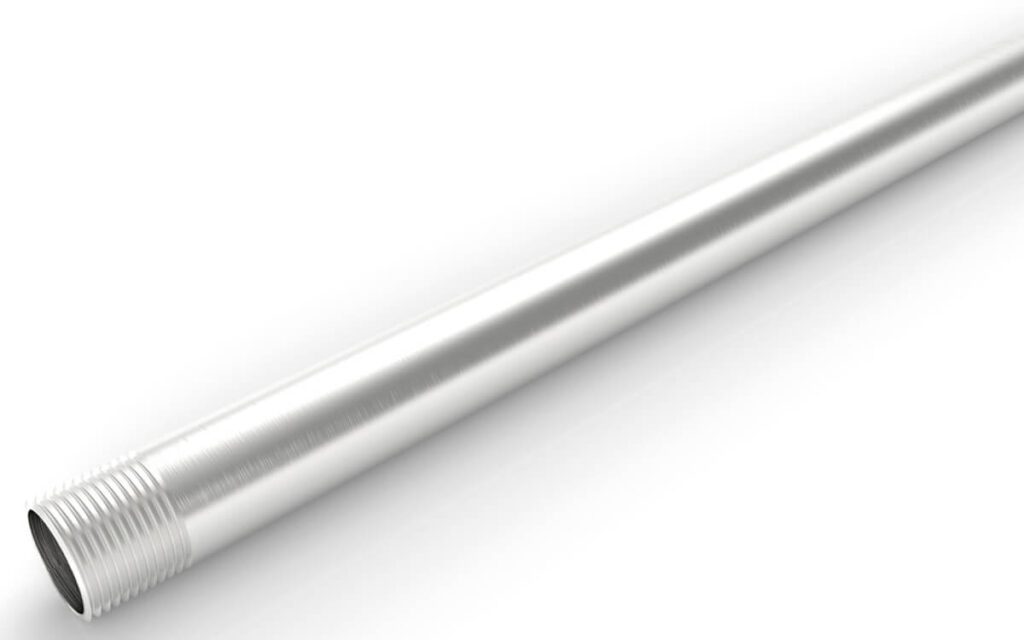
A threadable stainless steel raceway of circular cross-section designed for the physical protection and routing of wire conductors and use as an equipment grounding conductor when installed utilizing appropriate fittings.
Electrical Rigid Metal Conduit – Red Brass (ERMC-RB)
Electrical Rigid Metal Conduit – Aluminum (ERMC-A)
| Trade Size | Nominal Inside Diameter (in.) | Outside Diameter (in.) | Wall Thickness (in.) | Length w/o Coupling (ft & in.) | Min Weight (10 pcs with Couplings) (lb) |
|---|---|---|---|---|---|
| 1/2 | 0.632 | 0.840 | 0.104 | 9’11-1/4″ | 27.4 |
| 3/4 | 0.836 | 1.050 | 0.107 | 9’11-1/4″ | 36.4 |
| 1 | 1.063 | 1.315 | 0.126 | 9’11” | 50.7 |
| 1-1/4 | 1.394 | 1.660 | 0.138 | 9’11” | 66.2 |
| 1-1/2 | 1.624 | 1.900 | 0.138 | 9’11” | 86.2 |
| 2 | 2.067 | 2.375 | 0.154 | 9’10-1/2″ | 125.0 |
| 2-1/2 | 2.489 | 2.875 | 0.193 | 9’10-1/2″ | 182.5 |
| 3 | 3.068 | 3.500 | 0.225 | 9’10-1/4″ | 236.8 |
| 3-1/2 | 3.570 | 4.000 | 0.245 | 9’10-1/4″ | 358.7 |
| 4 | 4.032 | 4.500 | 0.265 | 9’10” | 454.9 |
| 5 | 5.073 | 5.563 | 0.245 | 9’10” | 454.9 |
| 6 | 6.093 | 6.625 | 0.266 | 9’10” | 604.4 |
| Trade Size | Outside Diameter (in.) Max |
Outside Diameter (in.) Min |
Wall Thickness (in.) Max |
Wall Thickness (in.) Min |
Nominal Inside Diameter (in.) | Length w/o Coupling (ft & in.) |
|---|---|---|---|---|---|---|
| 1/2 | 0.820 | 0.810 | 0.085 | 0.070 | 0.659 | 9’11-1/4″ |
| 3/4 | 1.034 | 1.024 | 0.090 | 0.075 | 0.863 | 9’11-1/4″ |
| 1 | 1.295 | 1.285 | 0.100 | 0.085 | 1.063 | 9’11” |
| 1-1/4 | 1.645 | 1.630 | 0.105 | 0.085 | 1.448 | 9’11” |
| 1-1/2 | 1.890 | 1.875 | 0.115 | 0.090 | 1.683 | 9’11” |
| 2 | 2.367 | 2.352 | 0.115 | 0.095 | 2.150 | 9’11” |
| 2-1/2 | 2.867 | 2.847 | 0.160 | 0.140 | 2.575 | 9’10-1/2″ |
| 3 | 3.486 | 3.466 | 0.160 | 0.140 | 3.176 | 9’10-1/2″ |
| 3-1/2 | 3.981 | 3.961 | 0.160 | 0.140 | 4.161 | 9’10-1/4″ |
| 4 | 4.476 | 4.456 | 0.160 | 0.140 | 4.166 | 9’10-1/4″ |
• Steel with protective coatings
• Aluminum
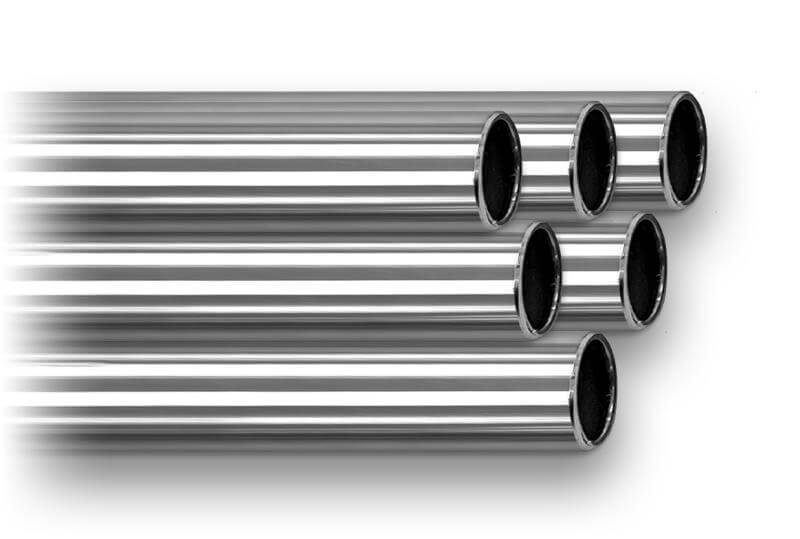
يجب طلاء السطح الداخلي إما بالزنك أو بطلاء عضوي. ويجب أن يحافظ هذا الطلاء الداخلي على سطح أملس ومتواصل، مع مراعاة الاختلافات الطفيفة الناتجة عن تدفق الطلاء غير المتساوي.
| Trade Size | Metric Designator | Maximum Length (ft) | Maximum Length (m) |
|---|---|---|---|
| 1/2 – 3/4 | 16 – 21 | 10′ 1/4″ | 3.05 |
| 1 – 2 | 27 – 53 | 15′ 1/4″ | 4.58 |
| 2-1/2 – 4 | 63 – 103 | 20′ 1/4″ | 6.10 |
المادة 342 ذكرت مادة الأنابيب المعدنية الوسيطةيتوفر t IMC في المواد التالية:
- فولاذ مع طبقات واقية
- الألومنيوم
| Trade Size | Metric Designator | External Diameter (in.) | Internal Diameter (in.) | Wall Thickness (in.) | Aluminum Min Weight (lb/ft) | Stainless Steel Min Weight (lb/ft) |
|---|---|---|---|---|---|---|
| 1/2 | 16 | 0.705 ±0.005 | 0.622 | 0.042 | 0.099 | 0.300 |
| 3/4 | 21 | 0.922 ±0.005 | 0.824 | 0.049 | 0.159 | 0.500 |
| 1 | 27 | 1.163 ±0.005 | 1.049 | 0.057 | 0.221 | 0.700 |
| 1-1/4 | 35 | 1.510 ±0.005 | 1.380 | 0.065 | 0.381 | 1.100 |
| 1-1/2 | 41 | 1.740 ±0.005 | 1.610 | 0.065 | 0.430 | 1.200 |
| 2 | 53 | 2.197 ±0.005 | 2.067 | 0.065 | 0.484 | 1.380 |
Test for Rigid PVC Conduit
Schedule 40 and Schedule 80 conduits have defined outside diameters and minimum wall thicknesses per trade size. These ensure structural integrity for various applications.
Conduit samples are tested using ASTM D 638. Aged samples must retain 95% of the tensile strength of unaged samples. Minimum strength is 5,000 psi for Schedule 40/80, and 4,000 psi for Type A and EB conduit.
Ten 6-inch conduit samples are tested using dropped weights. No more than three may crack or tear beyond 1/32 inch. Different weights are used: 20 lb for SCH 40, Type A, and EB; 75 lb for SCH 80.
Conduit must self-extinguish within 5 seconds after flame exposure and not ignite nearby materials. The test resembles the UL 94 V-0 rating, requiring high flame retardancy and no flaming drips.
Conduits must not deform or pull apart under pressure between steel plates. Flattened samples must maintain at least 70% of their original inside diameter.
Crush resistance measures a material’s ability to withstand steady, compressive forces (e.g., soil pressure). Impact resistance measures response to sudden shocks or drops. Both are critical in different field conditions.
For Schedule 40 and 80, sunlight exposure testing involves Izod impact strength (≥0.5 ft-lbf/inch). Specimens are tested over periods of 720–1440 hours following ASTM D 256 methods to ensure durability in UV conditions.
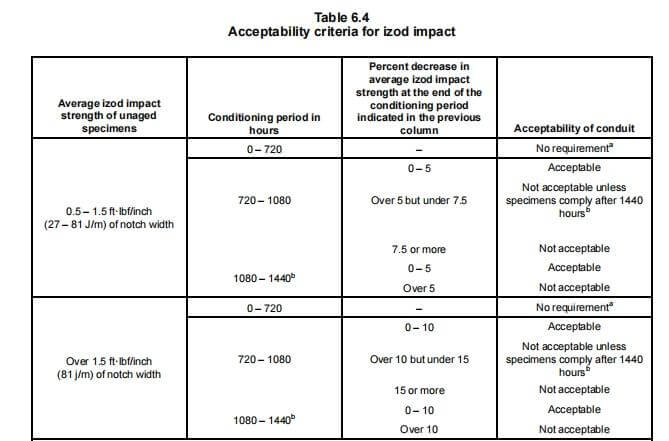
Types are defined by diameter system and wall thickness:
- ID: Inside Diameter
- IPS: Iron Pipe Size (Outside Diameter)
- Wall Thickness: SW (Standard), MW (Medium), HW (Heavy), XW (Extra Heavy)
التطبيقات:
- Aboveground: يو ال 2515
- Underground: يو ال 2420
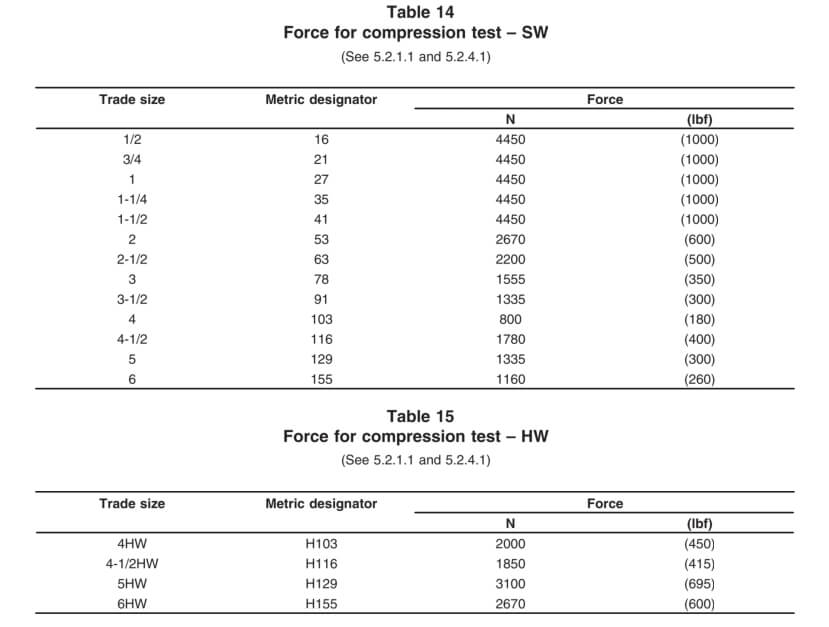
Each specimen is tested for post-flame duration: flaming should not exceed 30 seconds after the first four flame applications, nor 60 seconds after the fifth.
The optional FT4 flame test is one of the most rigorous, required in certain Canadian noncombustible building constructions. It involves exposure to a 70,000 BTU/hour flame for 20 minutes.
Pass criteria: Charred length must not exceed 1.5 m (5 ft.) from the bottom of the burner (CSA C22.2 No.38).
Qualification Tests for Reinforced Thermosetting Resin Conduit (RTRC)
3. Exploring Burial Depth Requirements for Rigid Electrical Conduits
في مجال التركيبات الكهربائية، يعد عمق الدفن المناسب للأنابيب أمرًا بالغ الأهمية لضمان السلامة والامتثال والمتانة. تتطلب الأنابيب الكهربائية الصلبة، بما في ذلك الأنابيب المعدنية الصلبة (RMC)، والأنابيب غير المعدنية مثل أنابيب البولي فينيل كلوريد (PVC)، والأنابيب المصنوعة من الألياف الزجاجية، متطلبات عمق دفن محددة تمليها كل من قانون الكهرباء الوطني (NEC) وأكواد البناء المحلية.

ملحوظات:
1. Cover shall be defined as the shortest distance in millimeters (inches) measured between a point on the top surface of any direct-buried conductor, cable, conduit, or other raceway and the top surface of finished grade, concrete, or similar cover.
2. Lesser depths shall be permitted where cables and conductors rise for terminations or splices or where access is otherwise required.
3. Where solid rock prevents compliance with the cover depths specified in this table, the wiring shall be installed in a metal or nonmetallic raceway permitted for direct burial. The raceways shall be covered by a minimum of 50 mm (2 in.) of concrete extending down to rock.
4. In industrial establishments, where conditions of maintenance and supervision ensure that qualified persons will service the installation, the minimum cover requirements for other than rigid metal conduit and intermediate metal conduit shall be permitted to be reduced 150 mm (6 in.) for each 50 mm (2 in.) of concrete or equivalent placed entirely within the trench over the underground installation.
5. Direct Buried Cables: Underground direct-buried cables that are not encased or protected by concrete and are buried 750 mm (30 in.) or more below grade shall have their location identified by a warning ribbon that is placed in the trench at least 300 mm (12 in.) above the cables.
6. Electrical Metallic Tubing, RTRC, PVC, and HDPE Conduit: These may be listed by a qualified testing agency as suitable for direct burial without encasement. All other nonmetallic systems shall require 50 mm (2 in.) of concrete or equivalent above the conduit in addition to the table depth.
7. Raceways Under Buildings or Exterior Concrete Slabs (100 mm / 4 in. Minimum Thickness): The slab shall extend a minimum of 150 mm (6 in.) beyond the underground installation, and a warning ribbon or other effective means suitable for the conditions shall be placed above the underground installation.
8. Other nonshielded cables not covered in 305.15(A)(1) or (A)(2) shall be installed in rigid metal conduit, intermediate metal conduit, or rigid nonmetallic conduit encased in not less than 75 mm (3 in.) of concrete.
9. Conductors Emerging from the Ground: These shall be enclosed in listed raceways. Raceways installed on poles shall be of rigid metal conduit, intermediate metal conduit, RTRC-XW, Schedule 80 PVC conduit, or equivalent, extending from the minimum cover depth specified in Table 305.15(A) to a point 2.5 m (8 ft) above finished grade.
تؤثر العوامل البيئية بشكل كبير على عمق دفن الأنابيب. يمكن لظروف التربة، مثل الاستقرار ومحتوى الرطوبة، أن تحدد مدى عمق تثبيت الأنابيب لضمان بقائها آمنة بمرور الوقت. على سبيل المثال، في التربة الصخرية أو غير المستقرة، قد يكون الدفن على عمق أكبر ضروريًا لمنع الضرر الناتج عن حركة التربة.
تلعب أحمال المرور أيضًا دورًا بالغ الأهمية، وخاصة في المناطق التي يتم فيها تركيب الأنابيب أسفل الطرق أو مواقف السيارات. وهنا، غالبًا ما تكون هناك حاجة إلى دفن الأنابيب بشكل أعمق لحماية الأنابيب من وزن واهتزاز المركبات والمعدات الثقيلة.
4. Installation Guidelines for Different Types of Rigid Conduit
قبل البدء، قم بجمع الأدوات والمواد التالية:
• أدوات القطع: منشارا يدويا أو قاطعا أسطوانيا (إذا كان القطع مطلوبا).
• مخرطة: لإزالة النتوءات الموجودة داخل الأنبوب بعد القطع.
• ثني الأنابيب: لإجراء انحناءات دقيقة.
• مفاتيح: الحجم مناسب.
• مركب مانع للتسرب أو طلاء مقاوم للتآكل: لحماية الخيوط إذا لزم الأمر.
تأكد أيضًا من أن لديك جميع التركيبات والوصلات والموصلات اللازمة لضمان التأريض المناسب.
• القياس والقطع: قم بقياس الطول المطلوب ثم قم بقصه بشكل نظيف باستخدام المنشار.
• رزمة: قم بإزالة النتوءات الموجودة داخل الأنبوب لتجنب تلف الأسلاك.
• الخيوط: استخدم قالبًا قياسيًا (NPT) بقياس ¾ بوصة لكل قدم للخيوط عند الحاجة. يجب أن تكون الخيوط ناعمة ونظيفة.
بالنسبة للأنابيب الملولبة مسبقًا، قم بتخطي عملية الترابط ولكن قم بحماية الخيوط المكشوفة أو التالفة.
• شد يدوي وربط بالمفتاح: ابدأ بالربط يدويًا، ثم قم بالربط باستخدام مفتاح الربط عادةً بعد دورة كاملة من الربط اليدوي.
• تجنب الإفراط في الشد: قد يؤدي الإفراط في استخدام القوة إلى إتلاف الخيوط والطلاء. لا تستخدم وصلات مفاتيح الربط.
• بالنسبة للتجهيزات غير الملولبة، ادفع الأنبوب بالكامل داخل التجهيز وقم بتثبيته بعزم دوران مناسب.
• ثني اليد: يمكن ثني الأحجام الصغيرة (من ½ إلى 1 بوصة) باستخدام أداة ثني يدوية؛ وتتطلب الأحجام الأكبر استخدام أدوات ثني ميكانيكية أو كهربائية.
• دقة: قم بوضع علامة على الانحناءات؛ وتجنب تجاوز 90 درجة بين نقاط السحب.
• تجنب العقد: منع التسطيح أو الالتواء، مما يقلل المساحة ويجعل عملية سحب الأسلاك معقدة.
• بالنسبة للأنابيب الملولبة مسبقًا، تجنب إتلاف الخيوط أثناء الانحناء.
• استخدم الأشرطة أو الشماعات أو المشابك لتثبيت الأنابيب على الجدران أو الأسقف أو العناصر الهيكلية.
• بالنسبة للمسارات الرأسية، قم بتأمين القناة في الطرف العلوي لمنع الترهل.
• بالنسبة للقنوات التي تنتقل من الخرسانة إلى التربة أو تحت الأرض، ضع الطلاءات المعتمدة أو الأغلفة أو القنوات المغطاة بالـ PVC للحصول على حماية إضافية.
• فحص الطلاءات المطبقة في المصنع بحثًا عن أي تلف أثناء التثبيت.
• استخدم المركبات المقاومة للتآكل، أو الطلاء الغني بالزنك، أو الشريط المقاوم للتآكل حسب الحاجة.
• حماية الخيوط المقطوعة ميدانيًا باستخدام الطلاءات المقاومة للتآكل والموصلة للكهرباء.
• إجراء اختبار الاستمرارية للتأكد من استمرارية الكهرباء والتأريض.
• فحص جميع توصيلات الأنابيب للتأكد من إحكامها وتأمين الدعامات.
• التحقق من بقاء الطلاءات الواقية سليمة وتطبيق الحماية الإضافية حسب الضرورة.
قبل أن تبدأ، قم بجمع الأدوات والمواد اللازمة لتثبيت قناة PVC بنجاح:
أنابيب PVC: القطر والطول المناسبين لمشروعك.
تجهيزات PVC: وصلات، وأكواع، وصناديق الوصلات، ومكونات أخرى.
أسمنت وطبقة أولية من البولي فينيل كلوريد: لتأمين الوصلات والتجهيزات.
قاطع الأنابيب أو المنشار المعدني: لقطع الأنابيب إلى الطول المطلوب.
أداة إزالة النتوءات: لتنعيم حواف القطع في الأنبوب.
شريط القياس: للحصول على قياسات دقيقة.
المستوى: لضمان المحاذاة الصحيحة.
سحب الخيط أو شريط السمك: لسحب الأسلاك عبر القناة بعد التثبيت.
قبل البدء في التركيب، قم بالتخطيط بعناية لمسار أنبوب PVC الخاص بك. يتضمن ذلك قياس المسافة بين النقاط التي سيمر بها الأنبوب ورسم خريطة للأماكن التي ستكون هناك حاجة فيها إلى الانحناءات والتجهيزات والوصلات.
القياس والعلامة: استخدم شريط قياس لتحديد طول أنبوب PVC المطلوب لكل قسم ووضع علامة على أماكن إجراء القطع.
خذ في الاعتبار التمدد والانكماش: يتمدد أنبوب PVC وينكمش مع تغيرات درجة الحرارة، لذا ستحتاج إلى ترك بعض المساحة للحركة أو تثبيت تجهيزات التمدد في المسافات الطويلة.
إن قطع أنابيب PVC أسهل بكثير من قطع الأنابيب المعدنية، ولكن لا يزال من المهم إجراء قطع نظيفة ودقيقة لضمان التركيب السلس.
قطع الأنابيب: استخدم قاطع أنابيب من مادة البولي فينيل كلوريد أو منشارًا دقيق الأسنان لقطع الأنابيب إلى الأطوال المقاسة. تأكد من أن القطع مستقيمة ونظيفة.
إزالة النتوءات من الحواف: بعد القطع، استخدم أداة إزالة النتوءات أو سكينًا متعدد الاستخدامات لإزالة أي حواف خشنة أو نتوءات من داخل وخارج الأنبوب. هذه الخطوة ضرورية لمنع إتلاف الأسلاك عند سحبها عبر الأنبوب.
على عكس الأنابيب المعدنية، حيث يتم استخدام الخيوط أو التركيبات اللولبية، يتم ربط أقسام الأنابيب البلاستيكية من خلال عملية تسمى اللحام بالمذيبات. تتضمن هذه العملية استخدام مادة أولية وأسمنت من البولي فينيل كلوريد لربط الأنابيب والتركيبات معًا.
استخدم البرايمر: أولاً، نظف أطراف الأنابيب والجزء الداخلي من التركيبات باستخدام برايمر من مادة البولي فينيل كلوريد. يعمل البرايمر على تليين المادة وتجهيزها لعملية الترابط.
ضع أسمنت PVC: بعد وضع البرايمر مباشرة، قم بطلاء نفس المناطق بأسمنت PVC. تأكد من العمل بسرعة، حيث يجف الأسمنت بسرعة.
قم بربط الأنابيب والتجهيزات: ادفع الأنابيب داخل التجهيزة، مع لفها قليلاً لضمان انتشار الأسمنت بالتساوي. أمسك القطع معًا لبضع ثوانٍ لضمان الترابط القوي.
امسح الأسمنت الزائد: قم بإزالة أي أسمنت زائد يتسرب أثناء عملية التوصيل. اترك المفصل حتى يجف وفقًا لتعليمات الشركة المصنعة قبل التعامل معه بشكل أكبر.
تعمل عملية اللحام بالمذيبات هذه على إنشاء ختم مقاوم للماء، مما يجعل مادة PVC مثالية للتركيبات الخارجية وتحت الأرض حيث تكون مقاومة الرطوبة أمرًا بالغ الأهمية.
تختلف عملية ثني أنابيب PVC عن ثني الأنابيب المعدنية. يمكن ثني أنابيب PVC باستخدام الحرارة لإنشاء انحناءات ناعمة ومخصصة دون الحاجة إلى أكواع مسبقة الصنع في بعض المواقف.
تسخين أنبوب PVC: استخدم مسدسًا حراريًا أو سخانًا لثني أنبوب PVC لتسخين قسم الأنبوب حيث يلزم الثني. تأكد من توزيع الحرارة بالتساوي لتجنب تشوه الأنبوب.
قم بالثني: بمجرد أن يصبح الأنبوب مرنًا، قم بثنيه ببطء إلى الزاوية المطلوبة. ثبته في مكانه حتى يبرد الأنبوب ويحتفظ بشكله.
استخدم الأكواع المصنوعة مسبقًا: بالنسبة لمعظم التركيبات، يكون من الأسهل استخدام أكواع PVC المصنوعة في المصنع بزاوية 90 درجة أو 45 درجة، والتي يتم لصقها في مكانها باستخدام نفس عملية اللحام بالمذيبات.
نظرًا لأن مادة PVC أكثر مرونة وخفة وزن من الأنابيب المعدنية، فإنها تتطلب الدعم المناسب لمنع الترهل أو الحركة بمرور الوقت.
قم بتثبيت أحزمة أو مشابك الأنابيب: ادعم أنابيب PVC على فترات منتظمة عن طريق تأمينها بأحزمة أو مشابك الأنابيب. اتبع إرشادات NEC، التي توصي بدعم أنابيب PVC كل 3 إلى 6 أقدام، حسب قطر الأنابيب.
السماح بالتمدد: يتمدد أنبوب PVC وينكمش مع تغير درجات الحرارة. في المسافات الأطول، قم بتثبيت تجهيزات التمدد للسماح بالحركة دون إجهاد المفاصل. تعتبر تجهيزات التمدد ضرورية للتركيبات الخارجية أو المعرضة لأشعة الشمس حيث تكون التقلبات في درجات الحرارة كبيرة.
بعد تثبيت القناة وتثبيت وصلات الأسمنت، يمكنك سحب الأسلاك عبر القناة.
استخدم شريط صيد السمك أو خيط السحب: قم بتمرير شريط صيد السمك أو خيط السحب عبر مسار الموصل، ثم قم بتوصيل الأسلاك بشكل آمن بالشريط.
اسحب الأسلاك: اسحب الأسلاك ببطء عبر القناة، مع التأكد من عدم تعطلها أو تعرضها للتلف في أي حواف خشنة.
قم بالتشحيم إذا لزم الأمر: إذا كان مسار القناة طويلاً أو يحتوي على عدة انحناءات، فاستخدم مادة تشحيم سحب الأسلاك لتقليل الاحتكاك وتسهيل عملية سحب الأسلاك.
بمجرد سحب الأسلاك وإعداد النظام، قم بإجراء فحص نهائي للتأكد من تثبيت كل شيء بشكل صحيح وآمن.
التحقق من التوصيلات: تأكد من أن جميع الوصلات الملحومة بالمذيبات صلبة وأنه لم يتم فك أي من التركيبات.
التحقق من الدعامات: تأكد من أن جميع أحزمة التوصيل والمشابك متباعدة بشكل صحيح وآمنة.
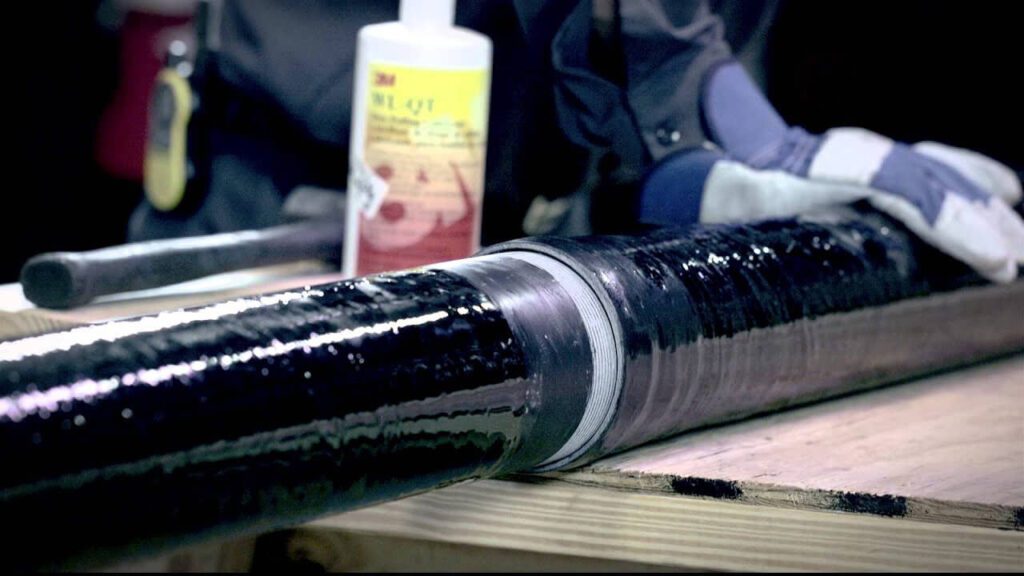
لتثبيت مجرى RTRC بنجاح، قم بجمع الأدوات والمواد التالية:
- قناة RTRC: القطر المناسب وطول الأنابيب.
- تجهيزات RTRC: الوصلات والمرفقين والمكونات الضرورية الأخرى.
- إيبوكسي أو لاصق مكون من جزأين: لربط أقسام الأنابيب والتجهيزات.
- منشار المعادن أو المنشار ذو الأسنان الدقيقة: لقطع الأنابيب حسب الحجم.
- أداة إزالة النتوءات أو ورق الصنفرة: لتنعيم حواف القطع.
- شريط القياس والمستوى: للحصول على قياسات دقيقة ومحاذاة.
- سحب الخيط أو شريط السمك: لسحب الأسلاك عبر القناة بعد التثبيت.
- مسدس الحرارة: للمكونات القابلة للانكماش بالحرارة إذا لزم الأمر.
كما هو الحال مع أي نظام توصيل، ابدأ بالتخطيط لمسار وتخطيط تركيب RTRC. حدد النقاط التي ستتغير فيها مسارات التوصيل، والأماكن التي ستكون هناك حاجة فيها إلى التركيبات، والأماكن التي يجب وضع نقاط الوصول أو صناديق الوصلات فيها.
القياس والعلامة: استخدم شريط قياس لتحديد أطوال الأنابيب المطلوبة بدقة ووضع علامة على الأماكن التي ستحتاج إلى إجراء القطع فيها.
إن قطع أنابيب RTRC يشبه قطع أنابيب PVC، إلا أن تركيبة المادة تتطلب معالجة دقيقة لمنع تلف الألياف.
قطع القناة: استخدم منشارًا يدويًّا، أو منشارًا تردديًّا، أو أي منشار دقيق الأسنان لقطع الأنبوب بالطول المطلوب. تأكد من أن القطع مستقيم لضمان التوصيل الصحيح.
إزالة النتوءات من الحواف: بعد القطع، قم بتنعيم الحواف الداخلية والخارجية باستخدام أداة إزالة النتوءات أو ورق الصنفرة. هذا يمنع تلف عازل الأسلاك.
التحكم في الغبار: عند قطع RTRC، استخدم معدات الحماية الشخصية مثل القفازات وحماية العين وقناع الغبار أو جهاز التنفس لإدارة غبار الألياف الزجاجية.
يتم ربط أنابيب RTRC باستخدام المواد اللاصقة أو الإيبوكسي المكون من جزأين المصمم لأنظمة أنابيب الألياف الزجاجية.
تحضير الأسطح: قم بتنظيف أطراف الأنابيب والتجهيزات الداخلية لإزالة الغبار والأوساخ والزيوت.
ضع المادة اللاصقة: استخدم الإيبوكسي الموصى به. ضعه بكمية وفيرة على كلا سطحي الوصل.
الانضمام والتعيين: أدخل الأنبوب في التركيبة ولفّه. ثبّته لفترة وجيزة حتى يبدأ بالالتصاق.
وقت المعالجة: اسمح بالمعالجة الكاملة وفقًا لإرشادات الشركة المصنعة قبل تطبيق الحمل أو الإجهاد.
تحتاج أنابيب RTRC إلى دعم مناسب، وخاصة في التطبيقات الأفقية:
- استخدم الأشرطة أو الشماعات أو المشابك المعتمدة كل 6 إلى 10 أقدام وفقًا لمتطلبات NEC.
- الوصلات التمددية: تتضمن وصلات التمدد في المسافات الطويلة أو المناطق ذات التقلبات في درجات الحرارة.
لا يتم عادةً ثني أنابيب RTRC في الموقع:
- استخدم المرفقين والانحناءات المصنعة في المصنع (على سبيل المثال، 90 درجة، 45 درجة)، والتي تم ربطها باستخدام مادة لاصقة.
- لا انحناء بالحرارة: يؤدي التسخين إلى الإضرار بسلامة هيكل RTRC.
بمجرد معالجة المادة اللاصقة، انتقل إلى تركيب الأسلاك:
- استخدم شريط السمك أو خيط السحب لتوجيه الأسلاك عبر القناة.
- استخدم مواد التشحيم على الجولات الطويلة أو المعقدة لتسهيل السحب.
- تأكد من أن التوصيل الأرضي والترابط متوافق مع NEC، حيث أن RTRC غير موصل.
قبل تنشيط النظام:
- قم بفحص جميع الوصلات اللاصقة للتأكد من الترابط الآمن.
- تأكد من أن جميع الدعامات موجودة في مكانها وعلى فترات زمنية صحيحة.
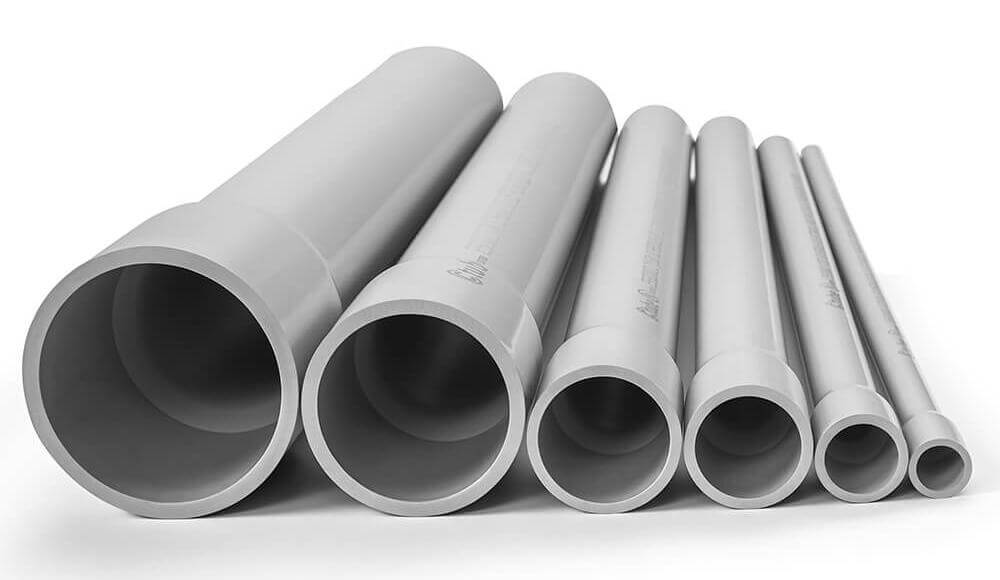
5. الخاتمة
| سمات | شركة آر إم سي | اي ام سي | فني الطوارئ الطبية | بولي فينيل كلوريد | مركز أبحاث ودراسات حقوق الإنسان |
|---|---|---|---|---|---|
| يكلف | أعلى تكلفة أولية | تكلفة معتدلة | أقل من RMC وIMC | أقل تكلفة أولية | تكلفة متوسطة إلى عالية |
| متانة | متينة للغاية، شديدة التحمل | متين، ولكنه أخف وزنًا من RMC | أقل متانة من RMC وIMC | متين، ولكن ليس قويًا مثل المعدن | متينة للغاية ومقاومة للصدمات |
| مقاومة التآكل | جيد مع الطلاءات | أفضل مع الطلاءات | عرضة للتآكل ما لم يتم طلائها | ممتاز ومقاوم طبيعيا | ممتاز ومقاوم للغاية |
| سهولة التثبيت | ثقيل، ويتطلب المزيد من العمل | معتدل، أخف من RMC | أسهل في التثبيت | سهل وخفيف الوزن ومرن | سهلة التركيب وخفيفة الوزن |
أهمية اختيار القناة المناسبة للبيئات المختلفة
بالنسبة للتطبيقات فوق الأرض، يجب إعطاء الأولوية للخيارات المقاومة للأشعة فوق البنفسجية لتحمل أشعة الشمس القاسية، بينما بالنسبة للتركيبات تحت الأرض، يجب التركيز على مقاومة الرطوبة والتآكل للحماية من العوامل البيئية.
المناطق المعرضة للرطوبة
في البيئات التي تكثر فيها الرطوبة - مثل الأقبية أو الحمامات أو المنشآت الخارجية - يعد اختيار القنوات المقاومة للماء أمرًا حيويًا.
تساعد الخيارات مثل أنابيب PVC أو الأنابيب المتخصصة المقاومة للرطوبة على منع التآكل، والذي يمكن أن يؤدي إلى أعطال كهربائية ومخاطر تتعلق بالسلامة.
بالإضافة إلى ذلك، غالبًا ما تلبي الأنابيب المقاومة للرطوبة معايير محددة للمواقع الرطبة، مما يضمن الامتثال للمعايير الكهربائية.
مخاطر التآكل
في البيئات الصناعية أو التجارية، قد تتعرض الأنابيب لمواد كيميائية مختلفة، بما في ذلك المذيبات أو الأحماض أو المواد الكاوية.
يساعد استخدام الأنابيب المصنوعة من مواد تقاوم التحلل الكيميائي - مثل أنواع معينة من الأنابيب المصنوعة من مادة PVC أو المعدن - في الحفاظ على سلامة الأسلاك.
لا يمنع هذا الاختيار تلف القناة نفسها فحسب، بل يحمي أيضًا البيئة المحيطة والموظفين من التعرض للخطر.
في المناطق الساحلية أو الأماكن ذات الرطوبة العالية، يعد اختيار القنوات المقاومة للتآكل أمرًا ضروريًا.
يمكن للخيارات مثل الأنابيب المصنوعة من الألياف الزجاجية أو الفولاذ المقاوم للصدأ أن تتحمل الظروف البيئية القاسية، مما يمنع التدهور المبكر ويضمن الموثوقية على المدى الطويل.
يعد هذا الاختيار مهمًا بشكل خاص بالنسبة للمنشآت الموجودة تحت الأرض أو المغمورة بالمياه، حيث يكون التعرض للرطوبة والأملاح أمرًا لا مفر منه.
درجات الحرارة القصوى
تتطلب المناطق التي تشهد درجات حرارة شديدة، سواء كانت حارة أو باردة، قنوات مصممة لتحمل مثل هذه الظروف.
على سبيل المثال، تضمن الأنابيب المصممة لمقاومة الحرارة العالية أو التجمد بقاء الأسلاك وظيفية دون المساس بالسلامة.
في درجات الحرارة الباردة الشديدة، قد تكون هناك حاجة إلى قنوات مرنة لمنع التشقق، بينما في درجات الحرارة المرتفعة، يمكن للمواد المقاومة للأشعة فوق البنفسجية أن تحمي من التعرض لأشعة الشمس.
ومن خلال دراسة هذه العوامل بعناية، يمكنك اتخاذ خيار مستنير يلبي احتياجات الأداء والمعايير التنظيمية، مما يساهم في نهاية المطاف في نجاح مشروعك.
سي تيوب is a premier manufacturer of high-quality PVC conduit solutions, dedicated to delivering reliable and durable products for electrical installations.
Based in China, we specialize in producing a wide range of conduits designed to meet the diverse needs of various industries, all while ensuring compliance with international standards.
Our PVC rigid conduit adheres to rigorous certifications such as UL 651, AS/NZS 2053, and CSA, guaranteeing exceptional performance, durability, and safety across different regions.
Thank you for reading! We hope this post was helpful to your project. Wishing you success in all your work — and feel free to reach out to us if you have any project needs or inquiries.
الأسئلة الشائعة
1. كيف يتم مقارنة الأنابيب الصلبة مع الأنابيب المرنة؟
يوفر الأنبوب الصلب مزيدًا من الحماية بسبب بنيته الصلبة، مما يجعله مثاليًا للبيئات ذات الضغط الميكانيكي الثقيل أو التعرض للرطوبة والمواد الكيميائية.
تعتبر الأنابيب المرنة أسهل في التركيب وتسمح بالحركة، مما يجعلها أكثر ملاءمة للمناطق التي تحتاج إلى المرونة.
2. كيف يتم تأمين الأنابيب الصلبة أثناء التثبيت؟
يتم تأمين الأنابيب الصلبة باستخدام أنواع مختلفة من أدوات التثبيت، مثل المشابك والأقواس والأشرطة، اعتمادًا على بيئة التثبيت (داخليًا أو خارجيًا أو تحت الأرض). تضمن هذه أدوات التثبيت بقاء الأنابيب ثابتة في مكانها وتحمي الأسلاك الموجودة بالداخل.
3. كيفية تحويل الزاوية مع قناة كهربائية صلبة؟
تلعب تجهيزات الأنابيب دورًا حاسمًا في ضمان الانعطافات السلسة لأنظمة الأنابيب الصلبة. تشمل التجهيزات الشائعة المرفقين والانحناءات الكاسحة، المصممة لإنشاء انعطافات بزاوية 90 درجة أو بزاوية مثل زوايا 45 درجة و22.5 درجة. تُستخدم أيضًا موصلات التي بشكل متكرر للسماح للأنابيب بالتفرع في اتجاهات مختلفة.
من بين الأنابيب الصلبة، تعد الأنابيب المعدنية الكهربائية (EMT) هي الأسهل في الثني. تعد الأدوات مثل زنبرك الأنابيب أو أداة ثني الأنابيب ضرورية لعمل ثنيات دقيقة، وضمان المحاذاة والتركيب المناسبين.

